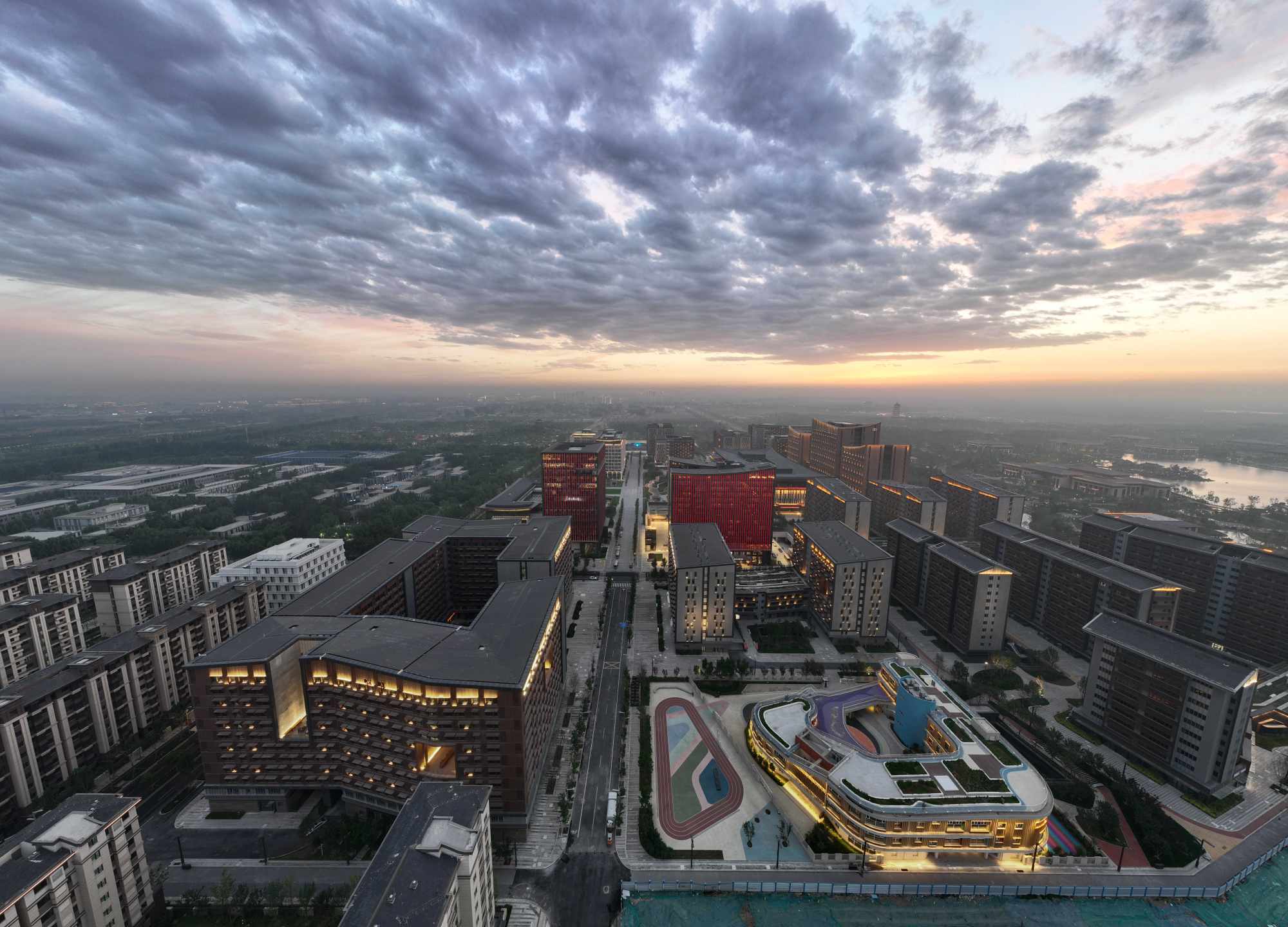The new signal tech guiding the way under China’s next megacity
Engineering pipelines such as electricity, communications, gas and water supply are laid underground. Express corridors that measure 4 metres high and 16 metres wide have been built for logistics, and there are a large number of underground car parks for residential areas and shopping centres.
They combine to form a huge underground maze that spans three main layers and goes to a depth of 22.5 metres. In total, more than 380km of tunnels and 22 sq km (8.5 square miles) of underground car parks have been built. On top of this, a web of underground roads connect all the above-ground communities and underground car parks.
When complete, it will outstrip the record-holder for largest underground city, Montreal. The Canadian metropolis only has 32km of tunnels that cover 12 square km. Meanwhile the underground city in Helsinki, Finland, has about 1 square metre of underground space for every 100 square metres of area on the surface. The ratio is about one to 80 in Xiongan.
But the scale of the underground maze poses unique challenges for navigation, with people at risk of losing their way in the vast space. To address this, BUPT’s school of information and communication engineering, with its experience in 5G and signal positioning, has been spearheading research since 2020.
“We can make a phone call and view a webpage in an underground space because our cellphone receives signals from some mushroom-like signal booster,” Science and Technology Daily quoted Lu as saying in a report late last month.

They first developed specialised BeiDou indoor units to amplify the weak signals that reach the ground from the satellites.
“The device can also filter out irrelevant signals and bolster the useful ones while safeguarding against malicious interference,” Chu Xinghe, a postdoctoral researcher at BUPT, said.
But BeiDou’s 10 metre accuracy on the surface was likely to be inadequate underground, as car parks in particular require navigation accuracy, and signal attenuation also reduces precision.
The combining of satellite signals and 5G signals also posed challenges, with the potential for interference and noise. The team adjusted the filtering and power parameters to successfully transmit BeiDou signals underground without interfering with existing communication channels.
Strict city planning could limit Xiongan’s growth before it begins
After initial technology validation on the BUPT campus, field trials in Xiongan refined the navigation system at complex road sections. As demonstrated in a video on the BUPT website, a vehicle starts receiving navigation instructions from the moment it enters a car park, guiding it to a precise parking space.
The system is already deployed in over 700,000 square metres of underground space in Xiongan.
“This technology is not only in use in Xiongan’s Rongdong region but is expanding to the other regions,” Lu said.
Seamless navigation is now accessible through various apps like Baidu Maps and Gaode Maps, as well as the official app Xiongan Transportation.
The technology also offers value for money. Compared to other indoor positioning technologies based on Wi-fi or Bluetooth, this project’s costs have been around half, significantly reducing the amount of investment needed, according to Lu.
“As an innovative technology piloted in the Xiongan New Area, this underground positioning and navigation solution has the potential to be extended to hospitals, commercial complexes, underground mines, airport terminals and other complex scenarios,” Lu said.
He said he expected the technology to be expanded to other regions such as Henan, Fujian and Guangdong.